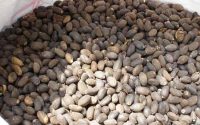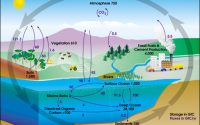07/31/2018
Biofuel Facts
A biofuel in any type of fuel in which the energy derived from the process of biological carbon fixation. Biological carbon fixation occurs in living organisms. The biggest difference between a biofuel and a fossil fuel is the time period over which the fixation occurs. In a biofuel, fixation occurs in months or years. In a fossil fuel, fixation occurs over thousands or millions of years. Additionally, fossil fuels are made entirely of hydrogen and carbon atoms while biofuels contain carbon, hydrogen, and oxygen. These are just a few of the interesting facts regarding biofuels, but many more follow.
History of Biofuels
- Biofuels are nothing new. In fact, they’ve been around as long as cars have. Henry Ford originally designed the Model T to run on ethanol. And people have been running diesel engines on vegetable oil much longer than they have been running diesel engines on petroleum-based diesel fuel.
- Rudolf Diesel, inventor of the diesel engine, originally designed it to run on vegetable oil. In fact, one of his early demonstrations, at the World Exhibition in Paris in 1897, had a diesel engine running on peanut oil.
- Petroleum based fuel originally won out over biofuel because of cost. The table is slowly turning though as fossil fuels become more expensive.
- During World War II, the demand for biofuel increased once again as fossil fuels became less abundant.
- Biofuel surged in popularity during the energy crisis of the 1970s.
- The most recent surge in biofuel popularity occurred in the 1990s in response to tougher emissions standards and increasing demands for enhanced fuel economy.
Classification of Biofuels
- Biofuels are often broken into three generations.
-
- 1st generation biofuels are also called conventional biofuels. They are made from things like sugar, starch, or vegetable oil. Note that these are all food products. Any biofuel made from a feedstock that can also be consumed as a human food is considered a first generation biofuel.
- 2nd generation biofuels are produced from sustainable feedstock. The sustainability of a feedstock is defined by its availability, its impact on greenhouse gas emissions, its impact on land use, and by its potential to threaten the food supply. No second generation biofuel is also a food crop, though certain food products can become second generation fuels when they are no longer useful for consumption. Second generation biofuels are often called “advanced biofuels.”
- Though not a traditional category of biofuel, some people refer to 3rd generation biofuels. In general, this term is applied to any biofuel derived from algae. These biofuels are given their own separate class because of their unique production mechanism and their potential to mitigate most of the drawbacks of 1st and 2nd generation biofuels.
Energy Content of Biofuels
- The energy content of biodiesel is about 90% that of petroleum diesel.
- The energy content of ethanol is about 50% that of gasoline.
- The energy content of butanol is about 80% that of gasoline.
- Most biofuels are at least as energy dense as coal, but produce less carbon dioxide when burned.
- The lower energy content of biofuels means vehicles travel shorter distances on the same amount of fuel. This has to be taken into account when considering emissions.
Air and Water Concerns with Biofuels
- Biofuels burn cleaner than fossil fuels, resulting in fewer tailpipe emissions of greenhouse gases, particulate emissions, and substances that cause acid rain such as sulfur.
- Biofuel production uses anywhere from 2 to 84 times as much water as fossil fuel production. Water use can be mitigated by planting crops that do not require irrigation.
- When the entire life cycle of a biofuel is considered, it may actually generate more greenhouse gases than fossil fuel. The following comparison of various fuel sources by gram of carbon dioxide produced per megajoule of energy produced. Note that the ranges provided for biofuels result from the location in which the feedstock is grown. For instance, sugarcane grown in Brazil as far less impact than sugarcane grown in South Africa.
-
- Coal – 112
- Gasoline – 85
- Diesel fuel – 86
- Natural gas – 62
- Biofuel made from sugar cane 18-107
- Biofuel made from wheat 58 – 98
- Biofuel made from corn 49-103
- Biodiesel is sulfur free, but contains nitrates that contribute to acid rain.
- Biodiesel has fewer polycyclic aromatic hydrocarbons, which have been linked to cancer.
Land Use and Biofuels
- The amount of land required to meet the world’s energy needs using biofuels is a major concern. Depending on the feedstock, the requirements can be massive. The following numbers reflect the amount of land that would be needed to meet the requirements of just the global aviation industry.
-
- Jatropha would need to be planted over 2.7 million square kilometers. That is an area roughly 1/3 the size of Australia.
- Camelina would require an area of 2 million square kilometers.
- Algae would need 68,000 square kilometers to meet the needs of the aviation industry. That is an area roughly the size of all of Ireland.
- The aviation industry accounts for only 13% of all fuel consumption, so the values above would need to be increased 10-fold to encompass global fuel demand.
- Jatraopha would need to be planted over 27 million square kilometers just to meet all fuel demands. An area that vast would cover all of Russia and the United States and still need a little more room.
- Algae would require an area of 680,000 square kilometers, or all of France plus some.
- There is not enough land currently in use to meet fuel needs. That means forested areas would need to be cleared. This would release vast amounts of carbon and create a carbon debt that could take centuries to repay.
- The impacts of biofuels on greenhouse gas emissions were originally measured by considering only direct land use changes. When indirect land-use changes were considered, the green house gas savings from biofuels increased as follows (note that negative and positive values are in comparison to current fossil fuels):
-
- Corn ethanol – From -20% to +93%
- Cellulosic ethanol – From -70% to +50%
Feedstock
- Everything from vegetable oil to coffee grounds to exotic plants like Jatropha can be used to produce biodiesel. As long as the plant produces triglycerides (fats and oils), it can be used to produce biodiesel.
- Bioethanol is produced from things like corn, sugarcane, and the non-edible parts of plants. The latter feedstock leads to the production of cellulosic ethanol.
- Algae can also be used to produce biofuels, including biodiesel. Algae offer a number of unique advantages and some disadvantages.
-
- It is easily genetically modified to produce oil or even to produce biofuels directly. There are algae that can directly convert carbon dioxide into things like gasoline, butanol, and diesel fuel.
- Algae can be grown on marginal land, which means they are less of a threat to the food supply than 1st and 2nd generation biofuels.
- Some companies have demonstrated that they can produce up to 9,000 gallons of biofuel per acre using specially modified algae.
- Algae require a great deal of water and fertilizer in order to grow. At this point, the net energy invested into producing biofuel using algae is greater than the amount of energy that can be extracted from the fuel.
Current Trends
- Most gasoline and diesel fuels in North America and Europe are blended with biofuel.
- Biodiesl accounts for about 3% of the German market and 0.15% of the U.S. market.
- About 1 billion gallons of biodiesel are produced annually.
- Bioethanol is more popular in the Americas while biodiesel is more popular in Europe.
- The U.S. and Brazil produce 87% of the world’s fuel ethanol.
- More than 22 billion gallons of fuel ethanol are produced each year.
- Ethanol is added to gasoline to improve octane and reduce emissions.
- Biodiesel is added to petroleum-based diesel to reduce emissions and improve engine life.
- Concerns about the global price of food have resulted in many nations revising (downward) plans for biofuel production and use.



